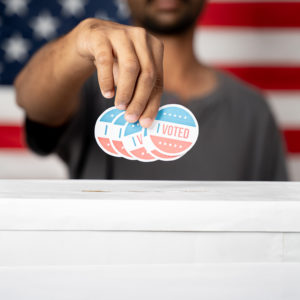One of the constant refrains from those who oppose election reforms designed to protect the security and integrity of the voting process is that serious fraud is a myth.
But as a shocking new report from the Public Interest Legal Foundation (PILF) shows, those naysayers could not be more wrong.
PILF’s report, “Critical Condition,” highlights the severity of the problem: inaccurate voter rolls, duplicate registrations, dead voters, and incomplete registrations — all of which allow fraud by those willing to exploit vulnerabilities in the system.
The foundation discovered over 140,000 instances of potential election fraud in the 2016 and 2018 elections, ranging from individuals illegally voting in multiple states to someone voting in the name of a deceased voter.
PILF created the type of database that President Trump’s Presidential Advisory Commission on Election Integrity wanted to create, but was prevented from doing so by multiple, frivolous lawsuits filed by the Left.
Many state governors and election officials also refused to provide data to the commission, which is why it was shut down before it could even do any research.
PILF obtained voter registration and voter history data from 42 states. It had to sue three states — Illinois, Maine and Maryland — to get what is supposed to be public information after they refused to comply with their own laws.
All of this information was put into the SAVE (Safeguarding America’s Votes and Elections) Database. It was then supplemented with information from other commercial and government data sources, such as credit agencies, obituaries, and the Social Security Death Index.
By supplementing the voter registration information, PILF was able to sift out as many “false positives” as possible.
A false positive in data comparisons is when two different individuals have the same name and birthdate. For example, “John James Smith” born July 4, 1976, appearing in two state voter registration lists, may actually be two different people.
By leveraging other identifying information, such as commercial data, Social Security numbers and credit address histories, one can eliminate most, if not all, false positives that have plagued prior reports from other entities. PILF now has what it says is “the best platform ever constructed to analyze the health of voter rolls and catalog potential vote fraud vulnerabilities.”
So what did PILF uncover?
There are currently 349,773 deceased registrants on the voter-rolls in 41 states.
The worst states are Michigan, Florida, New York, Texas and California, which account for roughly 51 percent of the dead voters who are still mistakenly registered. Even worse, state records show that 7,890 of these deceased voters cast ballots from the grave in the 2016 presidential election and 6,718 did so in the 2018 congressional elections.
If that wasn’t bad enough, PILF also found that:
— 8,360 individuals registered and voted in two different states during the 2018 election;
— 43,760 individuals were registered more than once at the same address and cast second votes in the 2016 election, while 37,889 individuals appeared to have voted twice from the same registration address in 2018 (thousands of these apparent double votes were exclusively mail-in ballots);
— 5,500 voters cast ballots twice in the same state from two different registration addresses in 2018; and
— 34,000 voters appeared to have used non-residential, commercial addresses, such as gas stations, casinos, and restaurants, to register to vote.
This last problem — registering at a commercial address — is a serious issue. In fact, Rep. Steve Watkins (R-Kan.) has been charged with election fraud in July for claiming a UPS Store as his residence when he registered to vote, and then voting in a 2019 municipal election in Topeka, Kansas.
In 2018, PILF found that 17 ballots were cast from a self-storage facility in Compton, Calif., and four ballots were cast from the NPR Headquarters in Culver City, Calif.
The Heritage Election Fraud Database of almost 1,300 proven cases of fraud is just a sampling and not a comprehensive list of election fraud cases. As we note, it “does not capture reported instances that are not investigated or prosecuted.” These reported cases are likely just the tip of the iceberg.
As PILF’s report shows, there are 144,117 other potential cases of election fraud, just from the last two federal elections. These should be investigated by election officials and prosecuted by law-enforcement officials if the information PILF uncovered is correct.
Downplaying the risks and vulnerabilities for fraud in the current system only exacerbates existing problems, and compromises the most sacred right a free people have.
As the Heritage Election Fraud Database and the latest PILF report show, the threat of fraud is real — and it could make the difference in a close election.

